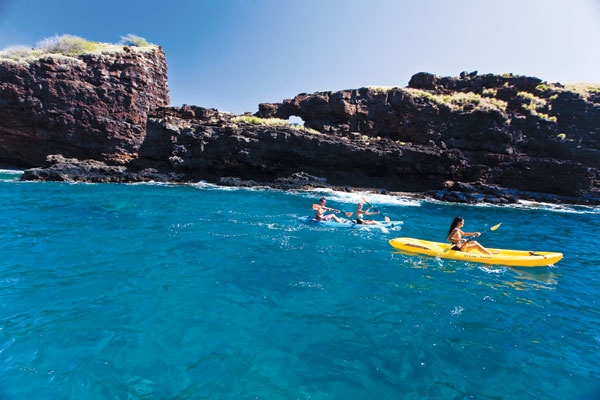
Whales follow us out to sea, fill the waters between the Molokai and Lanai. The ocean is quiet enough to hear their exhales, the occasional slap of a fin.
And Lanai is … just strange. A ghost of itself. In 1917, a guy named Harry Baldwin bought the whole island for about a half million bucks. Five years later, he sold it to Dole for double that. And for the next 70 years, Dole turned almost every inch of the island over to pineapple, working up to plant more than 15,000 acres in all.
Then third-world pineapple got cheaper. Now there are maybe 100 acres planted, and the rest of the island has gone into some quite beautiful version of a transition zone. The original native plants are gone. The pineapple is gone. Since the island is still 98 percent privately owned—now by the founder of Oracle software—the people are pretty much gone. One school, three hotels (two very fancy, one very traditional, with only 10 rooms), and one gas station where you’d rather not know how much gas costs because you don’t want to catch the face you make in the rear-view mirror.
All that said, the island is a landscape of sweeping vistas and gentle curves giving way to the whale-filled ocean. I keep looking around, trying to figure out why I like this place so much. Maybe it’s because it just is what it is; Lanai isn’t out to impress anybody. Some areas of Hawaii—walk down Waikiki, for example—have forgotten they’re Hawaiian. But Lanai is itself. Lanai, like Molokai, is a place where you have to decide to stay, where it’s better to be who you are than to go off to the big city and try to fit in.
And I love that kind of place. Places where you have to want to be there. Places where a pen of deer on a side street makes perfect sense.
Our last night on the boat. My chronic insomnia always disappears on boats, rocking like a gentle cradle, the low hum of the engines a lullaby. Before bed, we go out and look at constellations in the clear sky. I can’t name a quarter of them; it’s as if someone has rearranged the sky, and I think if this is my last view—me and Daz looking at stars—I won’t care if I never get a chance to see as much of the world as Captain Cook. I’ve seen this.
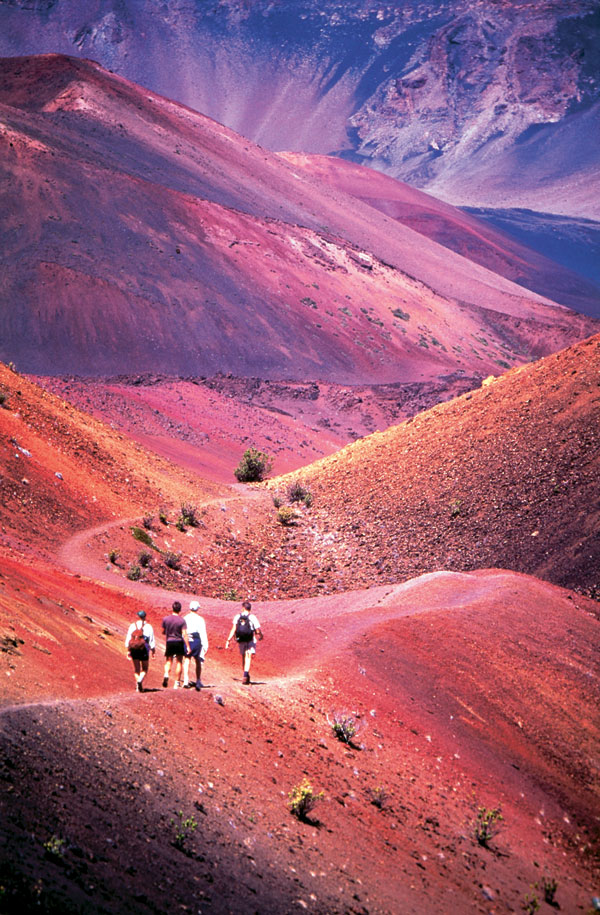
And so finally we come to Maui. Leaving the boat that’s been home isn’t so hard when it means arriving on Maui’s shore. Last time I was here, I hiked into the crater of Haleakala—you can drive from sea level to 10,000 feet on the volcano’s rim in about a half hour, the fastest road rise on the planet. This time, I opt for something a little easier: eating shave ice—which sounds just like a snow cone, but that’s kind of like calling concrete the same as filet mignon—under the great spreading banyan in the center of Lahina. The tree covers a full city block, its arial roots as thick as ancient trunks themselves. A guitar player hums out an old love song, Daz steals a bite of my shave ice, and I think, OK, I needed to see this, too.
Edward Readicker-Henderson last wrote about his tour of California’s El Camino Real in “The Mission Trail” (Jul/Aug 2012).
Become a Saturday Evening Post member and enjoy unlimited access. Subscribe now
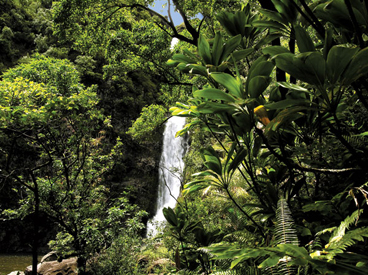
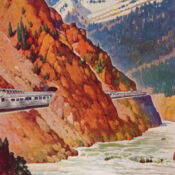

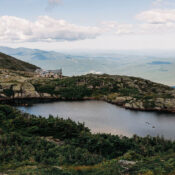
Comments
What a wonderful article for the mind to travel through. I have never known so much diversity existed in the Hawaiian Islands. This is an ideal travel story to read at bedtime peaceful; and relaxing. Thank you.
Mahalo for the wonderful article about Hawaii. It made me feel as if I were there standing next to you. Jerry, Gambrills Maryland